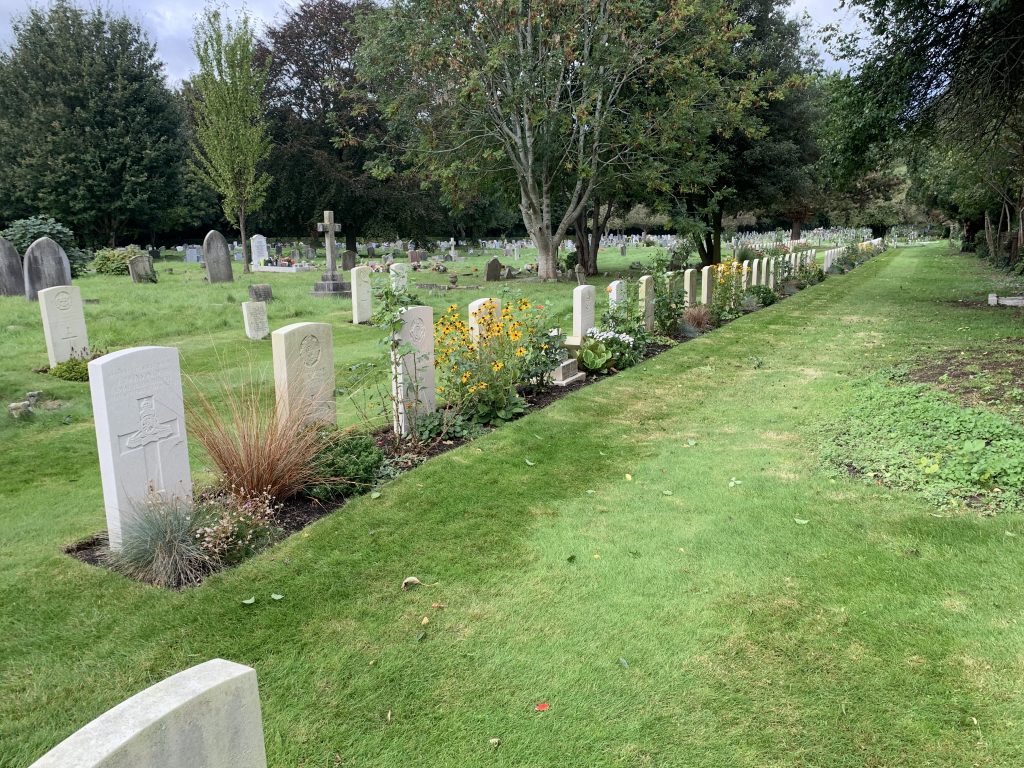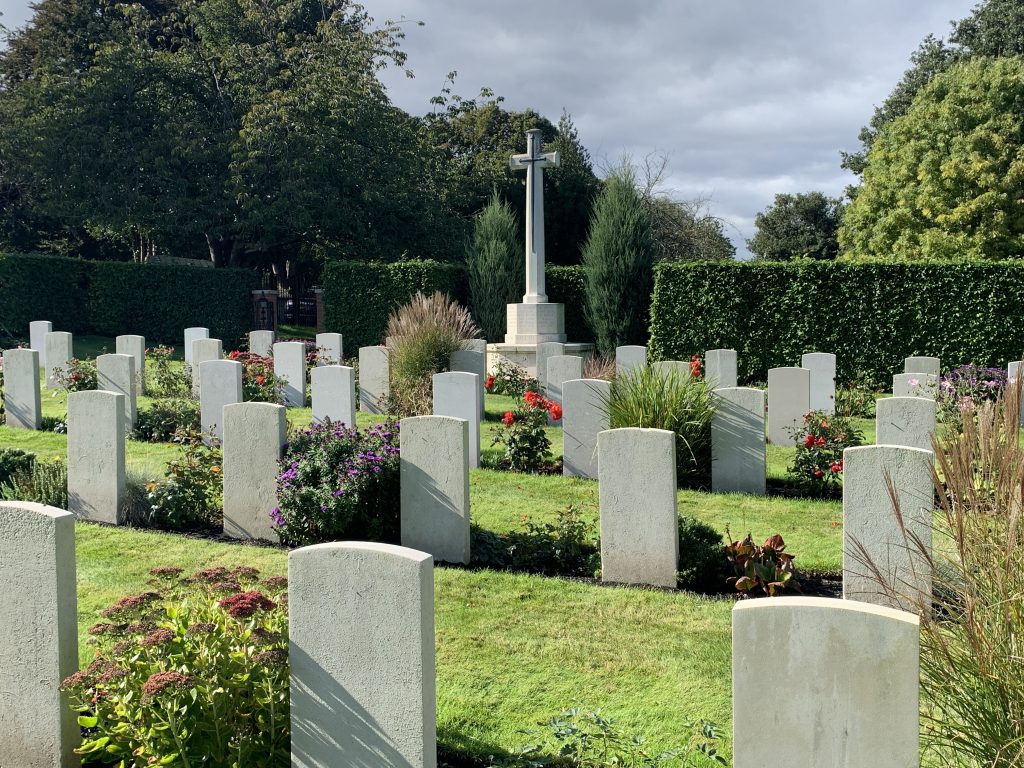- Home
- Local History
- Exploring Canada Corner
Exploring Canada Corner
Written by Pam Preedy.
That there's some corner of a foreign field
That is Forever England
If you take a walk up Church Street to All Saints Church and its graveyard, you’ll find Canada Corner which adjoins the church and is also on the opposite side of the road. In 1912, the old graveyard was becoming too small and an extension was needed.
A field, the last field suitable for such a purpose, was bought from Sir William Hart Dyke. Changes to the public footpath were completed in the summer of 1913 and the railings surrounding the graveyard were built to keep cattle out. The extension was left untouched and unneeded for three years – and then, when the Ontario hospital was constructed, there would be a necessity for the new burial ground. On June 14th, 1916 it was consecrated by the Bishop of Rochester.
Canada Corner itself is a small area in one corner of the graveyard. It is screened off by a hedge – a simple opening indicating the entry point. A gate was erected during WW2 by ex-Sergeant John King, D.C.M. who died on 29th January, 1941 aged 48, and was buried in the old section of the Churchyard.

The graves of 116 soldiers who died in the First World War, 88 of whom are Canadian, can be found in Canada Corner. A line of graves leads from Canada Corner. There are the last resting places of 23 British soldiers and five Australians. Their ages at death ranged from 17 to 51, but most died between the ages of 21-30. Information on the gravestones provides bare personal details.
Private Cameron of the Canadian Infantry was ‘wounded at Vimy Ridge, France, April 19th 1917, a dearly beloved and honoured son.’ Private E. Harper is remembered along with his brother. Stanley, aged 21, killed at Fresnoy on 9th Mary 1917, and Private D. Evans of the Welsh Regiment who died on 11th November, 1918 – the day the war ended.
Each grave represents a son lost in the prime of his life. A source of grief for all parents, but how would a family, who lost three sons recover?
One of the British soldiers was Bugler Charles Henry Bearman. He had lived in Orpington before migrating to Australia and appears to have lied about his age (as so many did), giving it as 19 years 10 months when he joined up in Australia in December, 1916. In the 1901 census he was only two! He returned to England for his training at Salisbury. Sadly he did not reach the Front; he died in Salisbury of cerebro-spinal meningitis. He had two brothers, Sidney, Royal Navy, officers’ cook, who died at Scapa Flow in July, 1917 following an explosion on HMS Vanguard, and Robert of the Royal Warwickshire Regiment. He had been wounded, shot through the spine by a sniper in 1918 and died on 27th May.
The Memorial Cross at Canada Corner was unveiled on Sunday 6th November, 1921 by Sir George McLaren Brown with local representatives and others representing the Canadian Provinces and Australia.
Its inscription reads:

THIS CROSS OF SACRIFICE IS ONE IN DESIGN AND INTENTION WITH THOSE
WHICH HAVE BEEN SET UP IN FRANCE AND BELGIUM AND OTHER PLACES
THROUGHOUT THE WORLD WHERE OUR DEAD OF THE GREAT WAR
ARE LAID TO REST
THEIR NAMES LIVETHER FOR EVERMORE
Much of the information can be found in a copy of the book, ‘Orpington From Saxon Times to the Great War,’ written in 1918 (held at Bromley Historic Collections, Bromley Central Library). A copy was presented to the relatives of each Overseas soldiers who lay buried in Canada Corner.
Also thanks to Penny Allen for her website and John Pateman for his book on Canada Corner.
Originally published in Life in Orpington magazine (Issue 35, January 2022)
